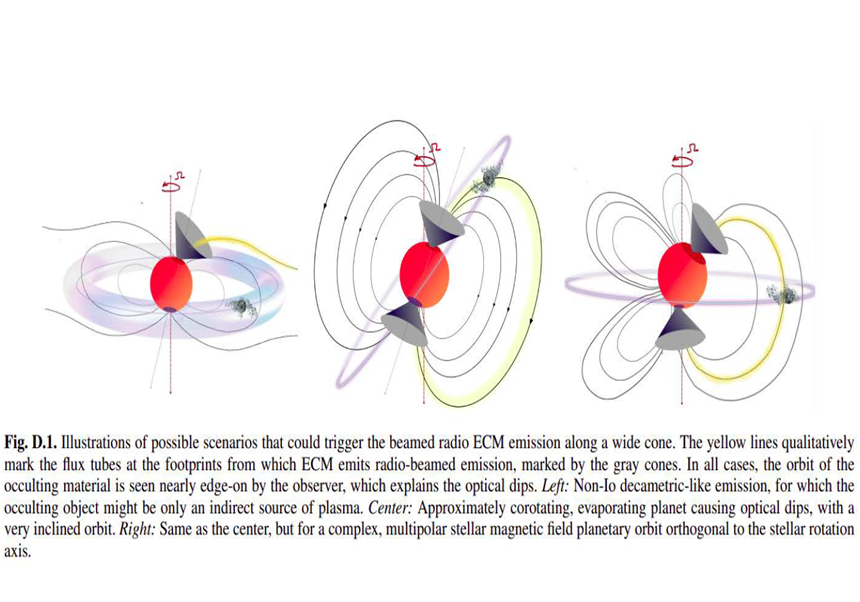
Title: Polarized radio emission from scallop-shell stars: The case of J0508-21 and DG Cvn
Place: Seminar del DAA. Jeroni Muñoz Research Building, fourth floor, in Burjassot.
Day: Thursday, April 10, 2025. Time: 14.30.
Abstract:
Scallop-shell stars (SSSs) or Complex Periodic Variables (CPVs) are a recently discovered class
of young M dwarfs, which show quasi-periodic dips in their optical light curves that are stable
over tens to hundreds of rotation cycles. The origin of these dips is not well-understood, however
the most promising scenarios involve the presence of gas trapped in huge prominences or dust
from the debris disk or a disrupting rocky planet at the co-rotation radius. The talk will focus on
the radio observations of two of the radio loudd SSSs: J0508-21 and DG Cvn.
J0508-21 was observed at 575–720 MHz with the uGMRT in two epochs of 7 hours each. We
detected ~mJy level fluxes with high circular polarization, along with an ~hour-long helicity
reversal in both epochs, happening at a similar rotational phase. This suggests presence of two
emission components: a persistent gyro-synchrotron emission and a short-duration, auroral like
emission, likely powered by the ECM mechanism, possibly resulting from a Jupiter-Io like
interaction between the star and the occulting material. On the other hand, DG CVn displays a
weakly polarized, quiescent component along with ~100% polarized bursts lasting from minutes
to over half an hour during its 14 hours of VLA observations at 1.5 GHz. Some of these bursts
also show a drift in frequency and time, which could be caused due to beaming effects or the
motion of the source and are consistent with plasma or ECM mechanisms. Overall, these
observations reveal that the SSSs are no longer contrained to optical observations only, and how
the radio observations can help reveal the underlying processes, highlighting the need to have
more contemporaneous/simultaneous multi-wavelength observations of such systems.






